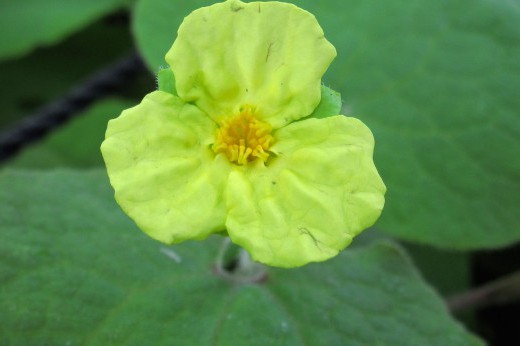Many folks know and love the magnolias, cherries, lilacs, and bluebells that light up Brooklyn Botanic Garden and the surrounding borough every spring. But there are thousands of other plants that, with a closer look, are every bit as wonderful.
An important step toward fully appreciating any plant, in cultivation or in the wild, is identifying it. Then we can start to understand its ecological interactions, reproductive strategies, and human uses.
Like many people, I often turn to apps that utilize AI, like iNaturalist or PictureThis, to help identify plants. They can be useful resources. Still, part of the fun in learning about the plant world is seeing with our own eyes and engaging with our own minds. One advantage of setting aside the phone is that you may have an easier time remembering and recognizing a new species during your next encounter.
Where to Begin?
With over a quarter million flowering plant species on earth, naming a plant is easier said than done. Our leafy companions tend not to introduce themselves—and even in botanic gardens, they don’t always wear name tags.
Start by taking an informed look at the plant. The goal here is to get in the habit of recognizing some defining features. By learning a few basics about a plant’s visible form—known as its morphology—the careful observer can get in the habit of noticing specific patterns among individuals.
In doing so, it is possible to begin grouping plants into categories, such as what family they belong to. Family is the taxonomic classification just above genus and species. It is a useful group to focus on as an identification tool because, having evolved from a common ancestor, distinct species within a family often share particular traits.
For example, members of the rose family (Rosaceae)—which includes cherry trees, almonds, and strawberries—usually have serrated leaf margins, which means the edges of the leaves are toothed in a particular pattern. While this might be true of several families, when paired with other indicators, it narrows down the list of possible suspects.
Key Questions to Ask
Botanists use a tool called a dichotomous key, which leads the reader through a series of questions to help identify a plant. Questions begin with the most general, like whether the leaves are broad or grasslike, and progress to a high level of detail. Versions of these keys can be found in printed and online guides (my favorite is Go Botany). Knowing some of these basic questions can be half the battle.
One of the first things I look for in broadleaf plants is whether the leaves are in an “opposite” or “alternate” configuration. Oppositely arranged leaves emerge in pairs at each node along the stem. Alternate is just as it sounds, with a staggered arrangement up the stem. A helpful acronym for recalling many of the plants with opposite leaves is “MAD-Cap-Horse.” This represents maples, ashes, dogwoods, members of the Caprifoliaceae (honeysuckle family), and horsechestnuts. It sounds like a lot, but think of how many corporate logos you know—surely there’s room for more plant facts!
Of course, what can be observed on any given plant will vary with their stage of growth. If you are dealing with a flowering plant in bloom, identification can be as easy as counting the number of the flower’s petals, sepals, pistils, or stamens. You can note these quantities and combinations to look up later, and cross reference with other information you have gathered.
Leaf shapes offer other vital clues. Consider the star-shaped leaf of a sweetgum, compared to the fan-like outline of a ginkgo. Here is where lexophiles should really get excited about the precise language of botany. The basic shape of a leaf can be sagitate (shield shaped), hastate (arrow shaped), cordate (upside-down heart shaped) or any other of at least two dozen terms that you could memorize to impress, or annoy, friends and family. (Maybe even lay down “spathulate” at your next Scrabble game.)
Smell and touch can also be employed. Many members of Lamiaceae (mint family) have square-shaped stems, which are sometimes too subtle to see, and must be felt between the fingers. The leaves of different mint species have distinct smells. Distinguishing between the smells of various species takes experience, but it’s certainly enjoyable.
Diving Deeper
Once you've stared at, sniffed, and poked the plant long enough (non-destructively!), it may be time to get your phone into the game. I’ll turn to one or more of the plant ID apps once I’ve run out of questions to ask myself and still have no clue what I’m looking at.
They’re also useful when I have a reasonable idea but need confirmation. The iNaturalist app offers the benefit of connecting to a community of other curious folks, as well as experts who may chime in with some insights. Comparing their findings against your own knowledge and other resources can weed out a false result.
Botany in a Day is a popular book that offers a great overview of plant families. I’m also fond of Botanical Field Guide, which offers detailed illustrations as well as marvelous philosophical musings. Brooklyn Botanic Garden also offers courses on both woody and herbaceous plant identification, which are taught by experts in the field as well as our own top-notch gardeners.
Most importantly, get outside (or into a conservatory)—and really be there when you get there! Happy botanizing.



